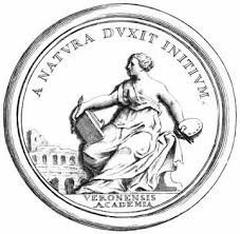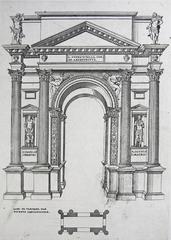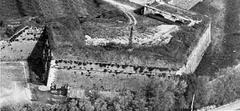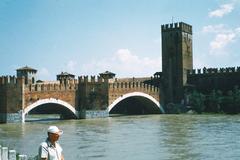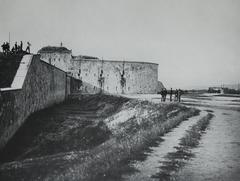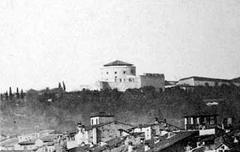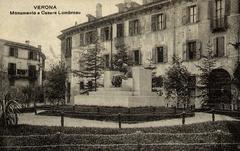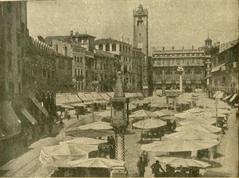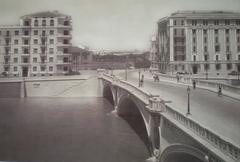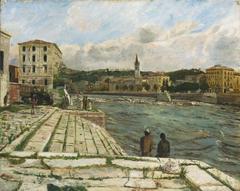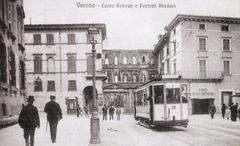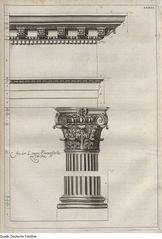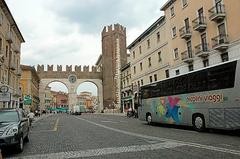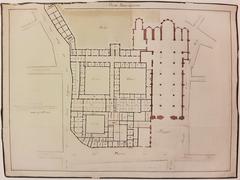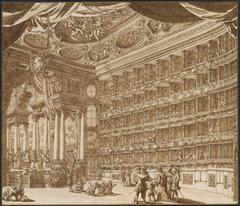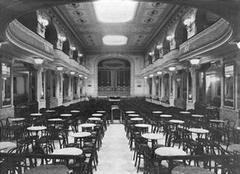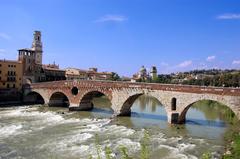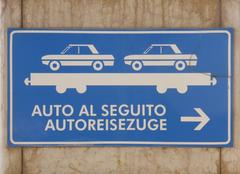San Giorgio in Braida Verona: Visiting Hours, Tickets, and Historical Sites Guide
Date: 04/07/2025
Introduction
San Giorgio in Braida is an iconic Renaissance church and historical landmark on the left bank of the Adige River in Verona, Italy. Revered for its elegant architecture, significant religious heritage, and outstanding art collection, it offers a multifaceted experience for history enthusiasts, art lovers, and cultural explorers. Founded in the 11th century as a Benedictine monastery, the site flourished as a spiritual, economic, and cultural hub. Today, it stands as both a monument to the past and a vibrant center for community life and worship.
This guide provides a detailed overview of San Giorgio in Braida’s history, visitor information, accessibility, ticketing, guided tours, and nearby attractions. For up-to-date information, consult the Verona tourism website, Verona Minor Hierusalem, and the San Giorgio in Braida parish site.
Table of Contents
- Introduction
- Historical Overview
- Practical Visitor Information
- How to Get There and Nearby Attractions
- Frequently Asked Questions (FAQ)
- Timeline Highlights
- Conclusion
- References
Historical Overview
Early Foundations and Monastic Origins
San Giorgio in Braida was established in the mid-11th century as a Benedictine monastery, commissioned by Cadalo, then deacon of Verona Cathedral and later bishop of Parma (veronaminorhierusalem.it). The name “Braida” comes from the Lombard word for “fenced lawn,” reflecting the location’s agricultural roots. The monastery quickly grew in spiritual and economic importance, benefiting from imperial patronage—by 1051, it was under the protection of Holy Roman Emperor Henry III (wikipedia).
Medieval Significance and Architectural Heritage
Throughout the Middle Ages, the monastery was a vital religious and economic hub, attracting pilgrims and supporting the local community. The most significant surviving medieval structure is the Romanesque bell tower from the 12th century, a rare example of Verona’s ecclesiastical architecture (spottinghistory.com). The church’s strategic position outside the city walls made it a prominent destination for travelers and worshippers.
Renaissance Transformation and Art
The most notable transformation occurred in the 16th century under the direction of Michele Sanmicheli, a leading Renaissance architect. Between 1536 and 1543, Sanmicheli redesigned the church, introducing the iconic dome and classical marble façade—now defining features of San Giorgio in Braida (visitverona.it). The church’s interior was also enhanced during this period, becoming a showcase for masterpieces by leading Venetian and Veronese artists.
Artistic Highlights:
- Paolo Veronese: His “Martyrdom of Saint George” dominates the main altar and is considered one of Verona’s artistic treasures.
- Jacopo Tintoretto: “Baptism of Christ” above the entrance.
- Paolo Farinati: “The Miracle of the Loaves and Fishes.”
- Felice Brusasorzi, Giovanni Francesco Caroto, Girolamo dai Libri, Romanino, Moretto da Brescia: Additional works enrich the chapels and nave (veronaminorhierusalem.it).
The church’s artistic legacy has earned it the reputation of a “pinacoteca”—a veritable art gallery, admired by visitors including Goethe (veronissima.com).
Modern Era: Preservation and Community
San Giorgio in Braida withstood the Napoleonic wars, its façade still bearing marks from early 19th-century conflicts (veronaoggi.it). The church remains active in community and religious life, hosting Masses, festivals, and concerts, and is celebrated for its six bells rung in the unique “alla veronese” style (daily.veronanetwork.it). Ongoing restoration projects, such as the recent dome refurbishment, ensure the preservation of its artistic and architectural heritage for future generations.
Practical Visitor Information
Visiting Hours
San Giorgio in Braida is generally open for visits as follows:
- Monday to Saturday: 08:00 – 10:00 and 17:00 – 19:00
- Sunday: 08:00 – 13:00 and 17:00 – 19:30
Special hours may apply during festivals and religious celebrations. For the latest information, check the parish official website.
Tickets and Admission
Admission is free. No tickets are required, but donations are welcome to support preservation and community activities.
Accessibility
The church offers partial wheelchair accessibility with ramps at the main entrance. Some interior sections have steps or uneven floors due to the historic structure. There are no dedicated accessible restrooms. Visitors with specific needs should contact the parish in advance.
Guided Tours and Special Events
- Guided Tours: Available by appointment; ideal for groups or those seeking deeper insights into the church’s history and art. Contact the parish office or local tourism authorities to arrange.
- Special Events: The church hosts annual religious festivals, concerts, and community gatherings. The feast of Saint George on April 23 is particularly notable.
How to Get There and Nearby Attractions
Address: Lungadige San Giorgio 6, 37129 Verona (VR), Veronetta district.
Getting There:
- On Foot: About a 10-minute walk from Piazza delle Erbe and Ponte Pietra.
- By Bus: Several city bus lines stop nearby; check ATV Verona for routes.
- By Car: Limited street parking is available; it is recommended to park in city center lots and walk.
- Cycling: Bike racks along the Lungadige make cycling convenient.
Nearby Attractions:
- Ponte Pietra: Verona’s ancient Roman bridge.
- Roman Theatre: Archaeological museum and performance venue.
- Giardino Giusti: Renowned Renaissance gardens.
- Chiesa di Santo Stefano and Museo Miniscalchi-Erizzo: Other significant sites accessible by foot.
Frequently Asked Questions (FAQ)
Q: What are the visiting hours of San Giorgio in Braida?
A: Monday–Saturday: 08:00–10:00 and 17:00–19:00; Sunday: 08:00–13:00 and 17:00–19:30. Hours may be extended during festivals.
Q: Is there an entrance fee?
A: No, entry is free, but donations are appreciated.
Q: Are guided tours offered?
A: Yes, by appointment. Contact the parish or local tourism office.
Q: Is the church wheelchair accessible?
A: The main entrance is accessible, but some interior sections have steps. Contact the parish for assistance.
Q: Can I take photographs inside?
A: Non-flash photography is generally allowed except during services.
Q: Where can I park?
A: Limited street parking; city center lots are recommended.
Timeline Highlights
- 1046: Foundation of the Benedictine monastery.
- 1051: Monastery completed and under imperial protection.
- 12th century: Romanesque bell tower constructed.
- 1441: Entrusted to the Congregation of San Giorgio in Alga.
- 1536–1543: Renaissance redesign by Michele Sanmicheli.
- Late 16th century: Installation of marble façade and major artworks.
- 1776: Bells cast for Veronese bellringing tradition.
- 1805: Damage during Napoleonic wars.
- Present: Active parish and major cultural site (spottinghistory.com, veronaminorhierusalem.it).
Conclusion
San Giorgio in Braida offers a unique convergence of religious significance, artistic excellence, and architectural beauty. Its collection of Renaissance masterpieces, enduring liturgical traditions, and welcoming atmosphere make it a highlight of Verona’s historical landscape. With free entry, accessible facilities, and a central location near other key attractions, the church is a must-visit for both tourists and locals.
Enhance your visit with guided tours or the Audiala app for curated experiences. For updates on opening hours, special events, and restoration projects, consult the official parish site and local listings. Immerse yourself in the art, history, and spiritual heritage of one of Verona’s most cherished sites.
References
- San Giorgio in Braida, Verona, Wikipedia
- San Giorgio in Braida - Veronaminorhierusalem.it, 2023
- Chiesa di San Giorgio in Braida - Visit Verona, 2023
- San Giorgio in Braida Restoration - Daily Verona Network, 2024
- San Giorgio in Braida Visitor Guide - Triphobo, 2024
- San Giorgio in Braida Parish Official Site, 2025
- Verona Tourism Official Site, 2023
- Spotting History - San Giorgio in Braida, 2023
- Verona Oggi - Historical Facts about San Giorgio in Braida, 2023
